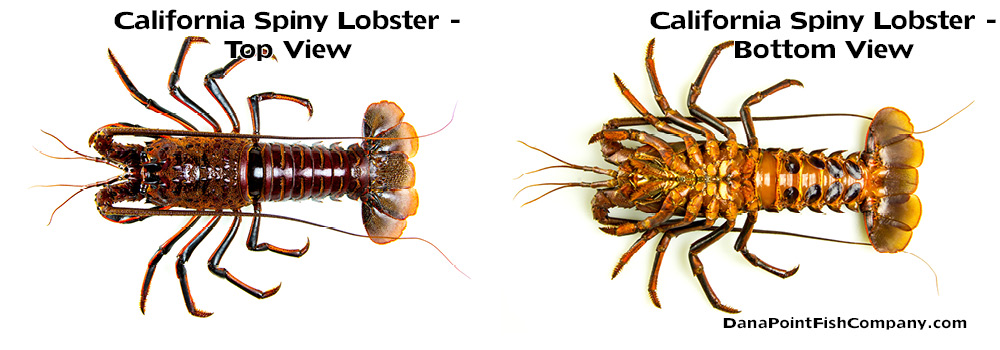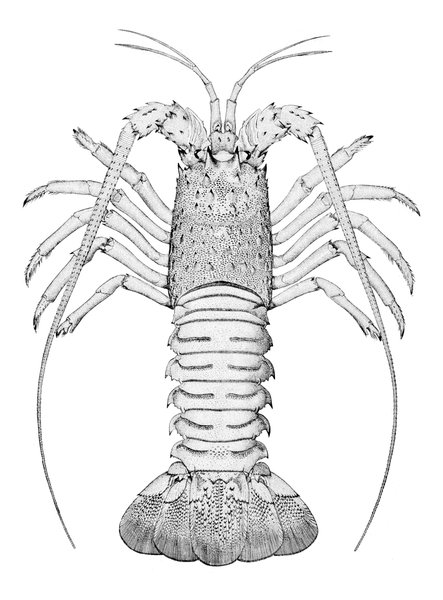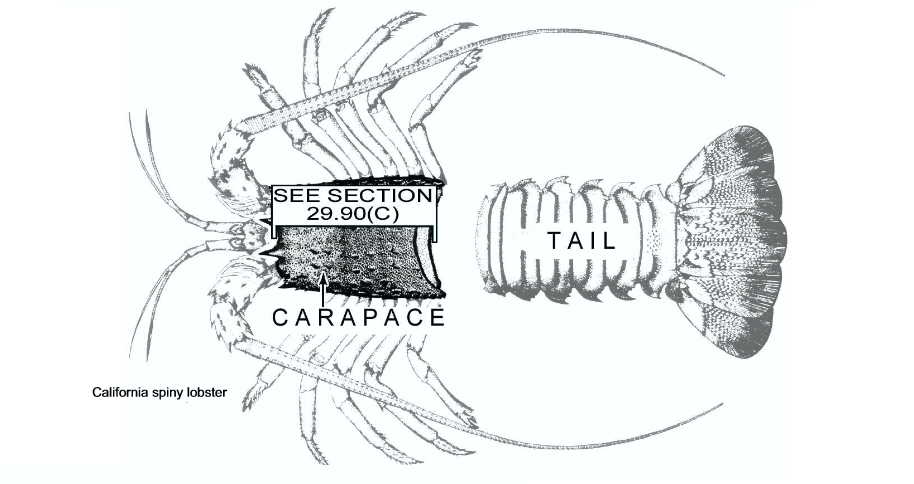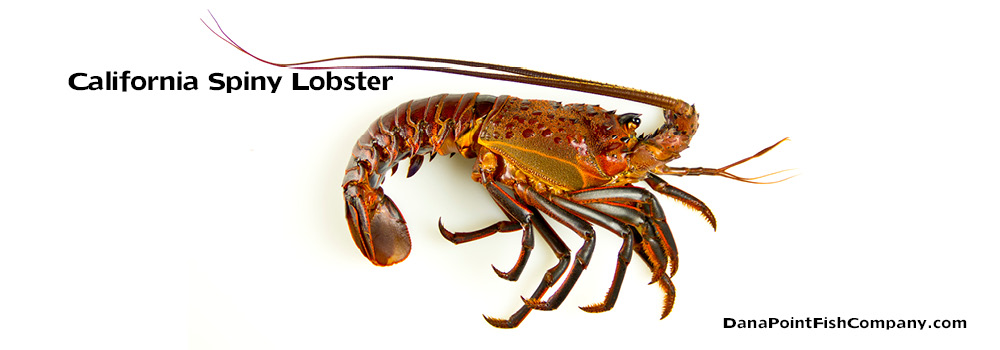The California spiny lobsters, Panulirus interruptus, are nocturnal invertebrates living in kelp forests and grassy beds along the Pacific coastal areas of North America. They are also called red rock lobsters or simply California lobsters.

California Spiny Lobster – top and bottom views
Identifying Characteristics and Biology
- California spiny lobsters lack the two large pincers that the Maine lobsters have.
- They have two long antennae, and are red-orange-brown in coloring. Their legs have long dark stripes running down them.
- While they typically grow to 12 inches in length, they can grow to more than twice that and live up to 50 years old.
- California spiny lobsters are nocturnal, feeding at night and hiding from predators during the day.
- This lobster gets its scientific name from its interrupted grooves along it’s tail (see picture below).

Range and Habitat
- California spiny lobsters are found on the west coast of the United States and Mexico, from San Luis Obispo and all along the Baja California peninsula. They like the warmer waters so it’s rare to find them more North than that.
- They like shallow areas, kelp forests, and rocky and grassy beds. They are also found in the surf.
- These lobsters range from the surface of the water to 240 feet below.
Market Forms
- California spiny lobsters are sweet in smooth in flavor.
Catching California Spiny Lobsters
This lobster is a managed species in California and in Mexico. Specific guidelines exist for catching them in California:
- Anyone catching or trying to take California spiny lobsters need a lobster report card (including those under 16 years of age) which monitors everything about the sport fishery (catches, gear, etc.). There is no limit to amount of cards purchased, but they all have to be reported or a fee will ensue. Each card holder needs to be in possession or immediate vicinity of their own catch, and the holder is required to have the card on hand when out fishing for them.
- The minimum size is 3 1/4 inches, measured in a straight line on the midline of the back from the rear edge of the eye socket to the rear edge of the body shell.
- All lobsters must be intact until prepared for consumption (you can’t remove the tail on the boat or at boat ramp).
- It is illegal to coax the California spiny lobster from its hiding spot with tickle sticks or other devices, and they can only be taken by hand or hoop nets. If caught on a hook when out fishing for fish, they must be returned to the sea.

Measuring Spiny Lobsters


Trackbacks/Pingbacks